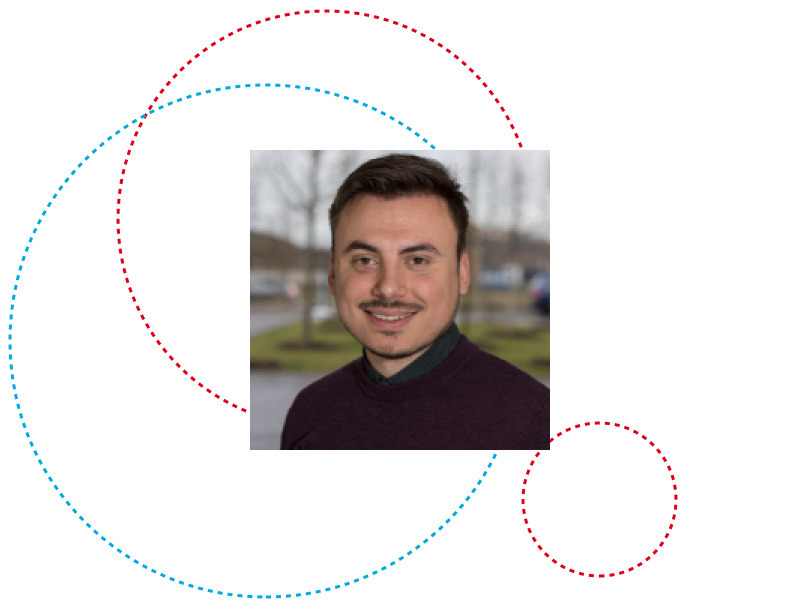Please join the PhD defence through this link.
Members of the defense committee:
– Prof. Dr. Björn OTTERSTEN, University of Luxembourg, Chairman
– Dr. Stefano ANDRENACCI, SES, Deputy Chairman
– Prof. Dr. Symeon CHATZINOTAS, University of Luxembourg, Supervisor
– Prof. Dr. Prof. ALESSANDRO VANELLI-CORALLI, University of Bologna, Italy, Member
– Dr Stefano CIONI, European Space Agency (ESA), Member
Abstract:
The Internet of things (IoT) via satellites is an attractive system architecture that has been identified as a key enabling technology to extend the IoT services on a global scale. Terrestrial-only IoT infrastructures are unable to cover a large portion of the Earth (e.g oceans, deserts, forests, etc.), while in other regions they represent a cost-inefficient solution (i.e. rural or remote areas). Furthermore, the potential tremendous number of IoT devices communicating in a network leads to large capacity demands. To this end, the role of the satellites to extend and complement the terrestrial IoT networks is unique and irreplaceable. Among several IoT technologies, Narrowband Internet of Things (NB-IoT) has been recognized as the leading one in addressing the machine type communication (MTC) traffic of the 5th generation of mobile communication systems (5G). Global-scale NB-IoT services hold a huge potential in opening up new market verticals and use cases for the future. However, the novel impairments caused by the signal propagation over the satellite channel compromise several procedures of the existing NB-IoT protocol.
In the above context of having NB-IoT connectivity via satellite links, the work carried out in this thesis mainly focuses on designing new communication algorithms which are capable of counteracting the impairments induced by the satellite channel. More specifically, the main objective of this work is to propose techniques that require minimal adaptations in the current standard, in order to have a fully functional NB-IoT network, either terrestrial or satellite-based. This approach is advantageous compared to designing a completely new satellite-specific protocol for several reasons. First, it relaxes the need for totally new network infrastructures and IoT chipsets. NB-IoT is being designed to co-exist and operate over cellular networks (4 & 5G) and the infrastructure is already in place. Second, it offers a capacity increase and flexibility of operation. Similar to terrestrial-only networks, relying on the satellite as the only mean of communication may lead to scarce capacity. Besides, in certain IoT applications (e.g. asset tracking) the devices are in a continuous movement in various environments, thus requiring both terrestrial and satellite connectivity. Last but not least, adapting an already existing protocol so as to be satellite-compatible clearly leads to faster network deployment and management.
The first part of the thesis is focused on developing a user scheduling strategy for the uplink data transmission which mitigates the level of the differential Doppler experienced in a Low-Earth Orbit (LEO) satellite down to a limit supported by the NB-IoT devices. The performance of the proposed strategy is validated through numerical simulations and a link budget analysis is done, allowing then to derive the space segment requirements from the power budget perspective in order to have reliable NB-IoT communications via LEO satellites. In addition, we bring the user scheduling strategy one step further and propose an efficient resource allocation strategy, which not only is capable of counteracting the differential Doppler problem, but also takes into account the distinct user channel conditions and various data demands. Extensive numerical results are performed to evaluate different performance trade-offs of our LEO satellite-based NB-IoT system.
The second part of the thesis is devoted to the random access (RA) procedure of the NB-IoT, which is mainly utilized for achieving uplink synchronization among users. The challenges imposed by the increased delay in the communication link into the RA procedure are analyzed and novel solutions to overcome them are proposed. We validate our techniques in an experimental setup, consisting of a user and a base station implemented in open-air interface (OAI), and a satellite channel implemented in hardware that emulates the signal propagation delay. The laboratory test-bed built in this last part of the thesis, not only enables us to validate various solutions, but also plays a crucial role in identifying novel challenges not previously treated in the literature. This work increases the technology readiness level (TRL) of satellite-based NB-IoT systems, demonstrating over a laboratory environment a successful RA procedure even in extreme values of delays experienced in a geostationary (GEO) satellite.
